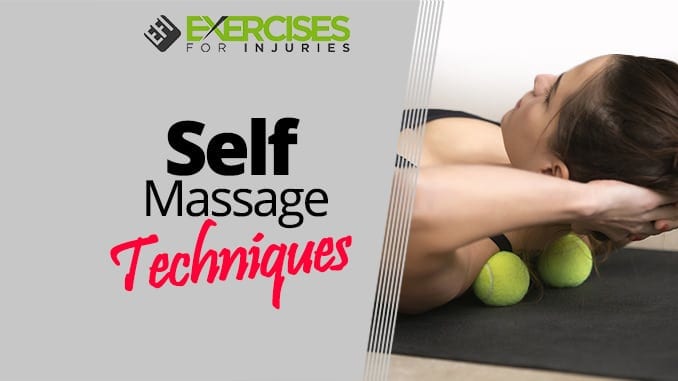Self-massage is a technique to ease muscle tightness, reduce soreness after exercise, and speed recovery after an injury.
But what if you don’t have a personal trainer or masseur to help you with this? Self-massage stimulates blood circulation and eases muscle tension which helps recover faster after a workout. This is a process of producing specific points in your body to relieve anxiety and stress. Sensory receptors in your skin detect pressure from your fingers and send signals to your brain, creating the feeling of pleasure.
Here we bring some self-massage techniques to help prevent injuries and accelerate post-workout recovery.
How to Perform Self-Massage
The first step to performing self-massage is to warm up the muscles by stretching. You can use a foam roller for it, or you can do some simple exercises like running, walking, or cycling. Once you have warmed up your muscles, it is time to work on the knots.
Press your thumbs into the areas that exhibit the most discomfort, and feel your way around to find areas of muscle tightness. For best results, start with lighter pressure and slowly increase it until you feel the knots released. Once you have worked out all the knots, finish with a few stretches to relax the muscles.
Upper body self-massage techniques
1. Shoulder
You can use your two thumbs to apply pressure on your shoulder’s upper and lower half. Apply pressure, and move your thumbs in circular motions.
2. Neck
Place your hand on the back of your neck, and use your other hand to apply pressure. Move your hand in small, gentle circles.
3. Upper back
Place your hands on your upper back, and apply gentle pressure. Move your hands in small circular motions, and try to target the areas that feel tense.
4. Mid-back
Place your hand on your mid-back, and use your other hand to apply pressure. Move your hand in small, gentle circles.
5. Lower back
Place your hands on your lower back, and apply gentle pressure. Move your hands in small circular motions, and try to target the areas that feel tense.
Lower body self-massage techniques
1. Thigh
Place both your hands on your thighs and apply gentle pressure. Move your hands in small circular motions.
2. Calf
Place both your hands on the back of your calves, and apply pressure. Move your hands in small circular motions.
3. Glute
Place both your hands on your glutes, and apply pressure. Move your hands in small circular motions.
4. Hamstring
Place both your hands on your hamstrings, and apply pressure. Move your hands in small circular motions.
If you read EFI (ExercisesForInjuries.com), you know I am a massive fan of self-massage.
It is best to have a massage therapist or bodyworker do the massage, but if you can’t afford to see one, don’t have time to see one, or do not have one living in your house, the second best thing is self-massage.
I will go over some of what I do in this 2-hour workshop.
Hands-free Self Massage for Injury Prevention and Workout Recovery
Description:
Rest and stretching are the recommended methods of preventing injuries or getting our clients’ bodies ready for their next session. In this practical and hands-on workshop, you will learn new, safe techniques and exercises for yourself and your clients when fending off injury and to help the body get ready for the next session.
You will be shown ways of using standard and inexpensive equipment found in a fitness center to add to your programs. We will use tennis balls, medicine balls, foam rollers, and a few other gym tools to help injury prevention and recovery for the neck, hip, shoulder, back, knee, and foot. You should attend this workshop if you have nagging tight muscles or have a tough time recovering between workouts.
What You Will Learn:
- Learn who should, but more importantly, who should not be doing self-massage exercises
- Go through a list of movements and exercises to help the foot, calf, knee, hip, back, shoulder, and neck for injury prevention and recovery.
Using the foam roller, medicine ball, tennis ball, and a few other fitness tools in new and unique ways.
Important Details: Make sure to dress for an active and hands-on workshop. That means no jeans, skirts, button-up shirts, or cute shoes. What is recommended are yoga pants, athletic t-shirts, and running shoes.
Location: Live2Play Fitness Studio – Unit #200, 5858 176th Street, Surrey, BC V3S 4E2
Date: Saturday, February 18, 2012, from 2 pm to 4 pm
Continuing Education Credits: 2.0 BCRPA (Pending)
To Register: Call Live2Play Fitness Studio at 604-579-0169
Due to equipment, this workshop is limited to 10 participants.
Please note that this will be the only time this workshop will be offered.

